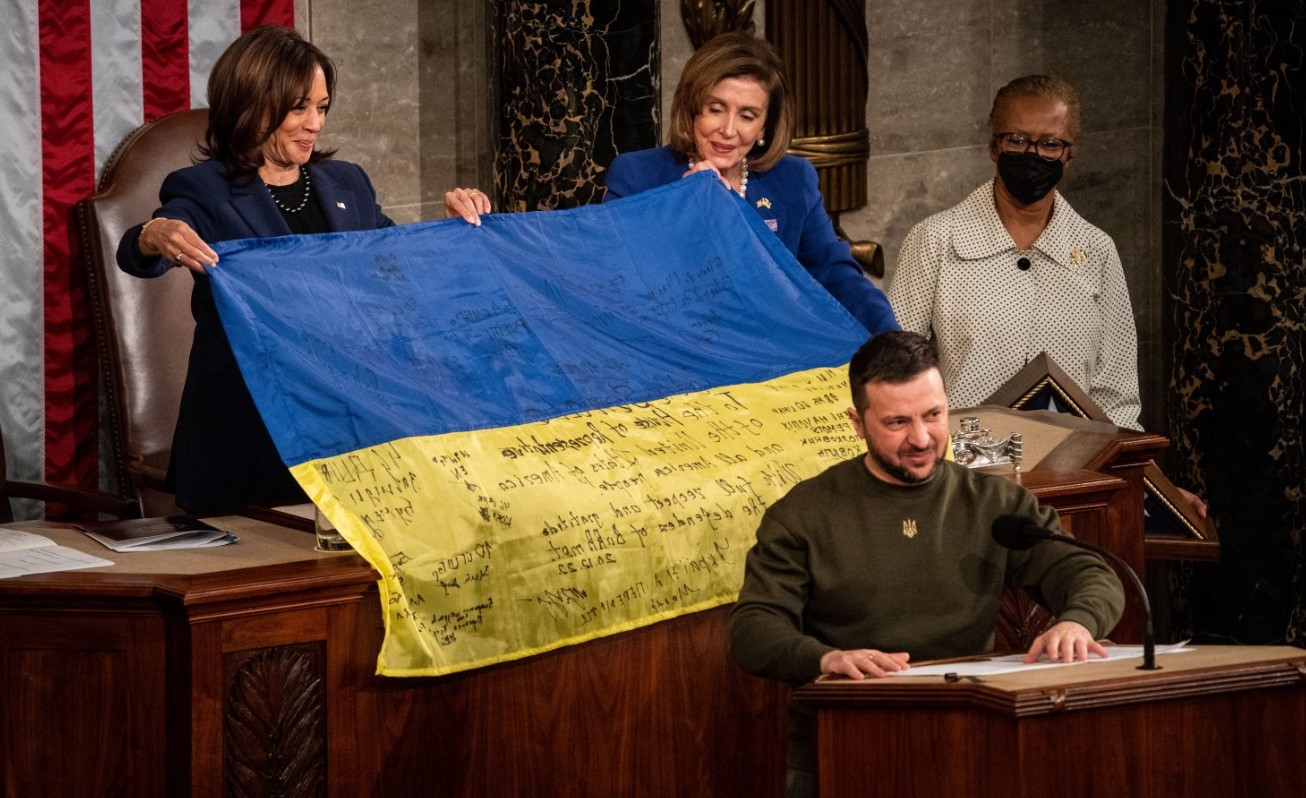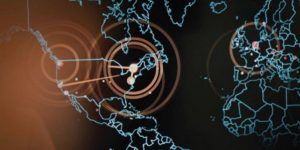
Strategic Communication And Media: Powerful Instruments To Shape Future War Outcomes

The prosecution of war in recent times has undergone a paradigm change. Conflicts today are fought over various domains in cognitive as well as noncognitive dimensions. We also see an emergence of grey zone warfare with a cyber and space dimension, making the war waging effort more complex and challenging. Media has also come up as another very powerful and vibrant player which gives a force multiplier effect to the final outcomes. Another important dimension is Strategic communication, which serves as an instrument of statecraft to facilitate governments involved in counter insurgency operations or armed conflicts, to influence perceptions, attitudes, beliefs and behaviours of stakeholders, non-state groups, neutrals, competitors, and adversaries in support of national security policies. It would therefore be interesting to see how both Strategic Communication and Media could be synergised to achieve our desired objectives.

Evolution of Concept of Strategic Communication
The concept of Strategic Communication (SC) evolved in the West “to understand and engage key audiences” for the advancement of national interests, policies, and objectives. In our context, SC is more than disseminating of information but the active solicitation of stakeholders’ perspectives. In this era of warfare, SC would therefore play a very decisive role.
The very nature of national security and war doctrines are rapidly undergoing a change. Emerging technologies like artificial intelligence, block chain, quantum computing have greatly impacted the way nations perceive their security threats and establish counter measures to stay ahead of their adversaries. The use of narratives, ideas, beliefs, thoughts and opinions have largely impacted the human minds and often blurring the fine line between a victory and a defeat. There have been numerous examples even, in the latest Ukraine war, wherein the western media has constantly been building different narratives to shape world opinion against Russia. Even in the epic battle of Mahabharata, the power of narratives was used by Lord Krishna to bring a far superior Kauravas to their knees.
The 1971 Indo-Pak war also saw how the then hitherto unknown strategic communication was used to orchestrate the surrender of the Pakistan Army who were made to believe that they were surrounded by a larger force. In the Kargil war of 1999, we saw visual media being used to great effect to bring about a real time war situation right into our homes with a great deal of emphasis on perception warfare.
Grey Zone Warfare
Today, a nation does not have to only safeguard its borders and physical assets but also the perception of its people who are prone to be influenced by the media, as opinions are shaped, issues are discussed and conclusions drawn. The latest phenomenon being the “Grey Zone Warfare” which is played upon by our adversaries without revealing the face behind. We often see how the international media targets to impact the image of a country by its propaganda wherein, the fault lines within a nation are targeted. We have a recent example of a report by the Special Inspector General for Afghanistan Reconstruction (SIGAR), a United States Organization, which has stated that the Afghan warlords like, Atta Mohammad Noor and Abdul Rashid Dostum were funded by India to create a resistance in North Afghanistan against Taliban. However, the report remains silent on India’s efforts in bringing up infrastructure development in Afghanistan, such as roads, highways, hospitals, dams and so on. India’s investment in Afghanistan of almost 30 billion US dollars also finds no mention.

It is therefore seen that irrespective of who achieves the kinetic victory, the party that succeeds in the occupation of the infosphere battlespace, in the context of the events, actions and reactions of its own country, its allies and adversaries, will shape the future of strategic relations for the next decade.
Strategic Communication: Weaponize Information
Analysing the importance of strategic communication, it would be important to highlight how our adversaries in the Indian Sub- Continent have been able to weaponise information and communication to bring about a psychological impact. An important deduction which emerges from this exercise is to achieve parity in war fighting capability when the other nation has a much superior military might. Pakistan would be an interesting case study on this. The formation of the Inter Services Public Relations Wing (ISPR) in 1949 by the Pakistan Army was the starting point to give substance to the weaponisation of information. In every war we have had with Pakistan, an attempt was made by this organization to subvert the minds of the people of Jammu and Kashmir to rise in defiance to the Indian Forces. To a large extent we saw them gaining a fair amount of success in 1989-90, when an ideological route was used to give shape to a very innovative cognitive campaign wherein narratives both directly and indirectly were framed to target the desired audience.
ISPR used framing as a strategic tool to perform three domain functions: diagnostic, evaluative, prognostic. The diagnostic function defines the problem and interprets causes: What is the problem? What and who are causing that problem? Moral evaluation provides moral judgment about the actors implicated in the problem. The prognostic function provides the solution to or remedies of the problem by justifying the proposed treatment through its predicted effects.
China has also relied heavily on strategic communication as a potent weapon to weaken the military resolve of an adversary. It is important to understand that a Nation’s Army relies on three intangible factors for success, these being Leadership, Training and Morale. Therefore, it was as early as 1990 in the wake of the CNN blitzkrieg during the Gulf war-1 that the Chinese conceptualized its strategy through a doctrine called as “War Under Informatized Conditions”. This finally led to its three-warfare strategy which was based upon cyber, media and legal domains. Its doctrine relies heavily on a non-contact warfare which has been amply demonstrated in its recent incursions in Eastern Ladakh as well its overtures in the South China Sea and intimidation drills against Taiwan.
The United States has recently been developing the concept of ‘Strategic Communication’, which concentrates upon the necessity of a coordinated strategic approach to the dissemination of information in the pursuit of national power, goals and interests to influence the perceptions and behaviours of a target audience by understanding, listening and engaging it within a conversation or dialogue. However, strategic communication goes further than synchronising a message across all government departments and agencies, it seeks the complete amalgamation of information through all instruments of national power not only to disseminate the message but also to ensure that it is reflected by the government’s actions on the ground, where words are matched by conduct. Strategic Communication is therefore intrinsically proactive and not reactive to events and situations.
India was keenly observing these developments in its neighbourhood but could never come up either a cogent policy on strategic communication structure nor could it formulate its National Security Strategy Doctrine. There was a clear gap in our intent and capability. In the year 2004, an Information Warfare Brigade in Kashmir was raised, however it was bereft of ideas and conceptualization on how to combat the strategy of compelling narratives and was mostly functioning on a standalone manner with hardly any impact on its designated role. Similarly, the Indian Army’s Military Civic Action Program (MCA) named as “Operation Sadbhavna” in Jammu and Kashmir could barely impact the psyche of the people and could not make any great difference in countering narratives and initiating some of its own.
Whole of Nation Approach
If implemented correctly, with foresight and vigour, strategic communication can shape the future battlespace from months to years in advance, providing time to build and secure relationships, whilst effectively dissuading or deterring existing or potential rivals. Strategic Communications can be differentiated from information and psychological operations because they are constituent components, but also because public affairs, public relations, and public diplomacy are also fundamental components that must work in synchronisation. In effect, an all-government approach is provided by the concept of Strategic Communications.
It is therefore evident that Strategic Communication relies heavily on a “Whole of Nation” approach which needs professionals with intricate knowledge and experience of strategy/narrative building and mass communication. Today social media has impacted the rank and file of nations. It plays an important role in shaping our opinions and mind sets. It is therefore evident that media would play an important role in the success of a strategic communication model.
Strategic Communication Model
To formulate a strategic communication model, the first step would be to establish a strong foundation on which the model should come up. An organisation at the Apex level such as setting up of a “National Strategic Communication Authority (NSCA) would be required. This organization should have the country’s best minds on Strategic thinking (a vast reservoir of our veterans can be utilized) as well media personalities. There would be a need for a seamless integration of the right set of tools to guide the planning and creative efforts with a synergized approach using both the internal teams as well as their external partners in order to develop a WHAT/HOW/WHO type of a model. We could use mapping tools with inbuilt segmentation which could decide the type of messages and communication to be created (WHAT), the means of communication to be formulated (HOW) and the targeted objectives(WHO).
Role Of Media
In today’s contemporary conflicts, both of interstate and intra state nature, such as in Syria, Iraq, Afghanistan and Pakistan, the threat is more difficult to define; in fact, there are often multiple threats from non-state actors working within a state. The media is now being increasingly used as a very powerful and vibrant player to shape up strategic communication.
We are all aware how today the media influences our attitudes, how we think and how we get opiniated. Strategic communication can be leveraged with the help of media in influencing public discourse and shaping conversation. It would be worthy to note that a news media can have a “third-party endorsement” effect which enhances its credibility. Therefore, the relevant aspects of our strategic communication content should largely revolve upon a clear communication plan with a strategic intent that the right people hear your message. It would be important to understand your target audience who today have easy access to internet and social media and are regularly using platforms such as Twitter, Instagram, Facebook, YouTube as well as blog posts. Even if the messages are repetitive, they would still serve the larger picture of creating a muscle memory and shape thoughts, ideas, and opinions.
Unlike the cold war time when the world was led by two major power blocks, the current world order is being led by different individual entities. There is a great struggle for power in the contemporary world order and media is playing a major role in it. Media provides the world with different ways to view a story and it helps people decide answers to questions like who the aggressor is and who the victim is. Media projections of news events can be manipulated with radical views or by handing out misinformation. Also, different News media outlets are inclined towards different ideologies with some inclined to the left and some to the right and some being state-controlled and monitored. The different portrayal of the same news event makes people and states act in a certain way and take actions accordingly.
Media Illustration : Ukraine War
From the start, Ukraine quickly framed the war as a David vs Goliath situation. Russia is a bigger country with a bigger army. However, we all tend to root for the underdog, even in portrayal in the movies, we rooted for the actor that had the odds stacked against him. It also helped Ukraine to project its cry for help as legitimate. Their sovereignty and existence were/and is still being threatened by a neighbour. They took control of their narrative, told their truth, and got the support of the whole world. Zelensky therefore assumed a Rambo like image of being a fighter.
Ukraine also started releasing quick-fire information about the wins they were getting on the battlefield. These had a three-pronged effect: Firstly, it improved the morale of Ukrainian fighters, many of whom are civilians, fighting to save their homes. Secondly, it led to doubts on the Russian side especially with soldiers not knowing why they were invading Ukraine. Thirdly, it bought Ukraine more time to get support from the west.
Ukraine also launched a website for Russian families to know the status of their soldier children in case they had been killed or imprisoned on the battlefield. This was to whip public sentiments in Russia, and prompt protests by families who wanted the war to stop. It was also an act of empathy and mercy to let people know if they had lost someone – Strategic communication at its finest.
Within 48 hours of the war, Russia floated the rumour that Ukraine’s President had fled the capital, Kyiv along with cabinet members. To counter this propaganda, President Volodymyr Zelenskyy released a video alongside other top government officials recorded on the streets of Kyiv. He was seen saying repeatedly ‘’We are here’’ with you, fighting alongside you for the country, till the end.
A video was published on Twitter by the Defense Ministry of Ukraine, wherein an S-400 missile defence system was seen floating on a children’s swimming pool balloon and targeting Crimea’s Kerch Bridge. Surprisingly, the video had garnered billions of views on social media platforms like YouTube, Twitter, and Facebook. At first instance, it seemed so natural. However, it would take just a second to apply some common sense and decipher how a missile defence system that weighs hundreds of tonnes can float on a balloon, but still, a large section of the public who watched this video believed it to be true. This demonstrates the power social media holds in influencing one’s views.
Conclusion
The 21st century offers an illustration of a landscape for a new battle of winning hearts and minds. Insurgents, terrorists, and nonstate actors are more competent and more active than ever before in creating a master narrative to challenge the state’s strategic narrative, political credibility, and legitimacy of a public war. The absence of narratives opens the door to the emergence of counter narratives, which are fundamentally different and prone to different interpretations.
The ultimate acceptance and rejection of news stories depend on the frames on which narratives are developed. Therefore, narratives that are aptly framed could change the public perception dramatically by focusing their attention on the aspect of an issue. It is therefore a necessity for nations today to adopt a media centric approach in formulating strategic communication strategies as often this could make a difference in the kinetic outcome of the war as well. To sum up:
“To win one hundred victories in one hundred battles is not the acme of skill. To subdue the enemy without fighting is the acme of skill.”
Sun Tzu, The Art of War.
Disclaimer
The opinions expressed in this article are the author’s own and do not reflect the views of Chanakya Forum. All information provided in this article including timeliness, completeness, accuracy, suitability or validity of information referenced therein, is the sole responsibility of the author. www.chanakyaforum.com does not assume any responsibility for the same.
Chanakya Forum is now on . Click here to join our channel (@ChanakyaForum) and stay updated with the latest headlines and articles.
Important
We work round the clock to bring you the finest articles and updates from around the world. There is a team that works tirelessly to ensure that you have a seamless reading experience. But all this costs money. Please support us so that we keep doing what we do best. Happy Reading
Support Us





















POST COMMENTS (0)